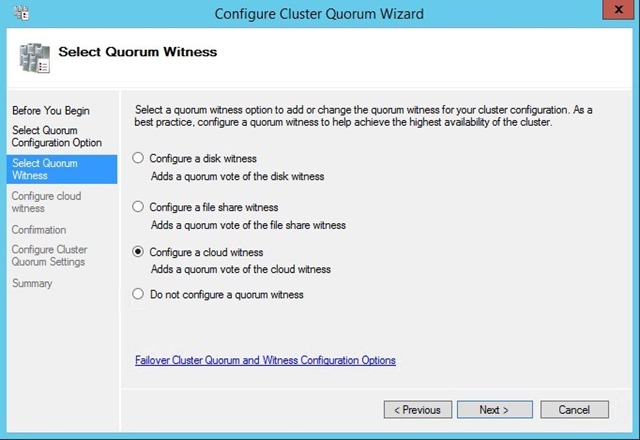
Microsoft System Center 2025 is now generally available
Microsoft System Center 2025 is now available, offering enhanced security, infrastructure management, and cloud capabilities for efficient IT operations.



This post was authored by Amitabh Tamhane, Program Manager, Windows Server
The primary goal of failover clustering in Windows Server is to provide a reliable infrastructure to make workloads highly available. Configuring quorum correctly for failover clusters is an important step in ensuring high availability for the cluster itself. This helps to make applications hosted on clusters to be highly available. With features like Dynamic Quorum, Dynamic Witness, and Node Vote Tiebreaker, the cluster automatically handles quorum vote calculations to provide the most optimal quorum configuration. When cluster quorum witness is specified, it gives an additional quorum vote for the cluster to toggle as needed, providing highest availability.
The recommendation is to simply always configure quorum witness – which effectively lets the cluster determine when to use the quorum witness vote as needed. This greatly simplifies the cluster quorum configuration. The question is: What type of quorum witness should be configured?
Cloud Witness is a new type of failover cluster quorum witness being introduced in Windows Server 2016. Cloud Witness leverages Microsoft Azure’s Blob Storage to read/write a blob file, which is then used as an arbitration point in case of split-brain resolution.
There are significant benefits from this approach:
If you have a failover cluster deployment, where all nodes can reach the internet (by extension Microsoft Azure), it is recommended to configure Cloud Witness as your quorum witness resource. Here are some sample scenarios where the Cloud Witness functionality can be utilized:
Our goal when making this feature available was to ensure that it would be a no-brainer to anyone familiar with failover clustering in Windows Server to start using the Cloud Witness option. With that in mind, we made an easy way to deploy Cloud Witness using Failover Cluster Manager GUI or cluster PowerShell:


Set-ClusterQuorum –CloudWitness –AccountName <StorageAccountName> -AccessKey <StorageAccountAccessKey>
There are a few things you’ll need to consider when using the Cloud Witness option:
To try this new feature in Windows Server 2016, download the Technical Preview.
Check out the series: